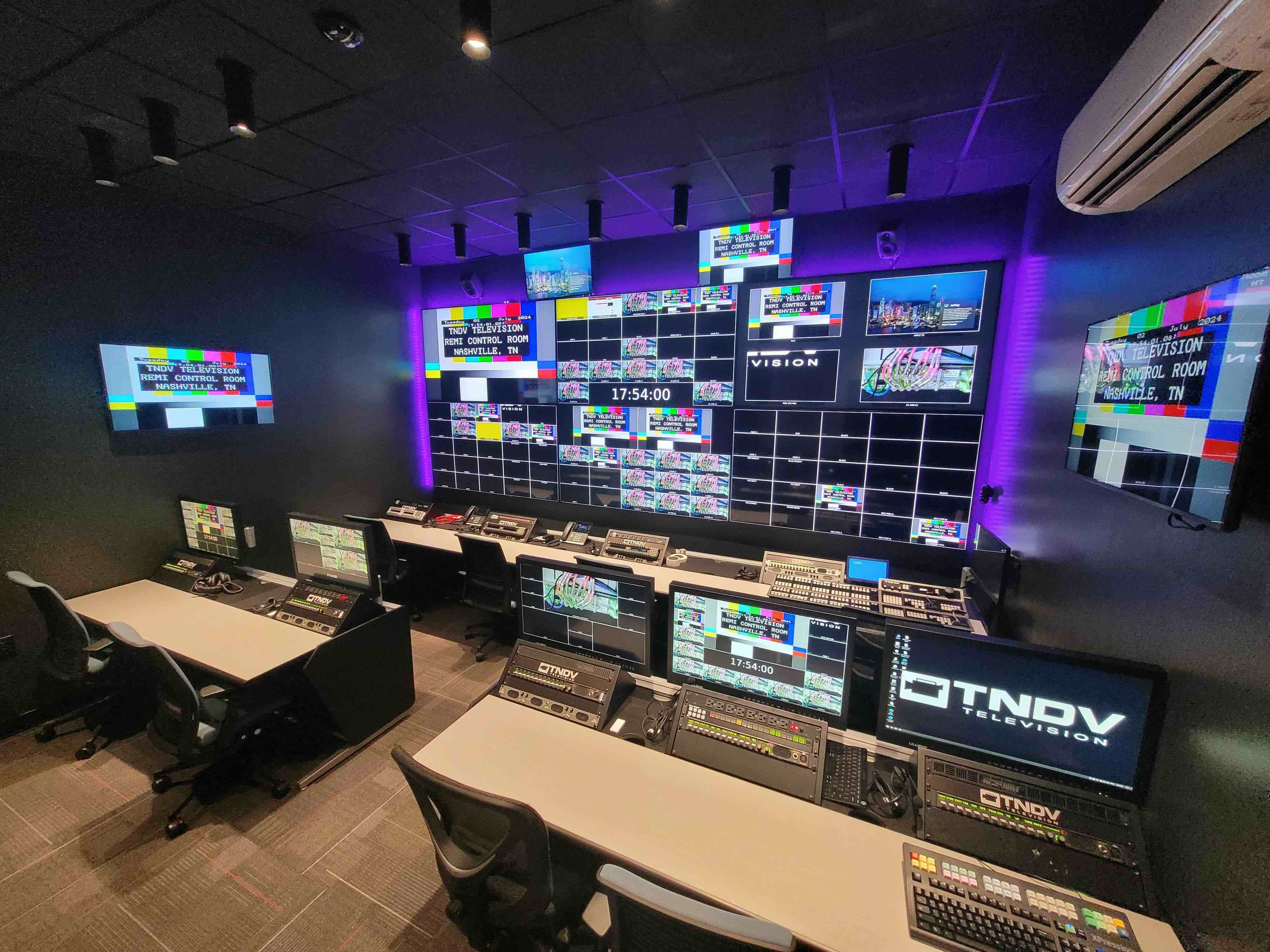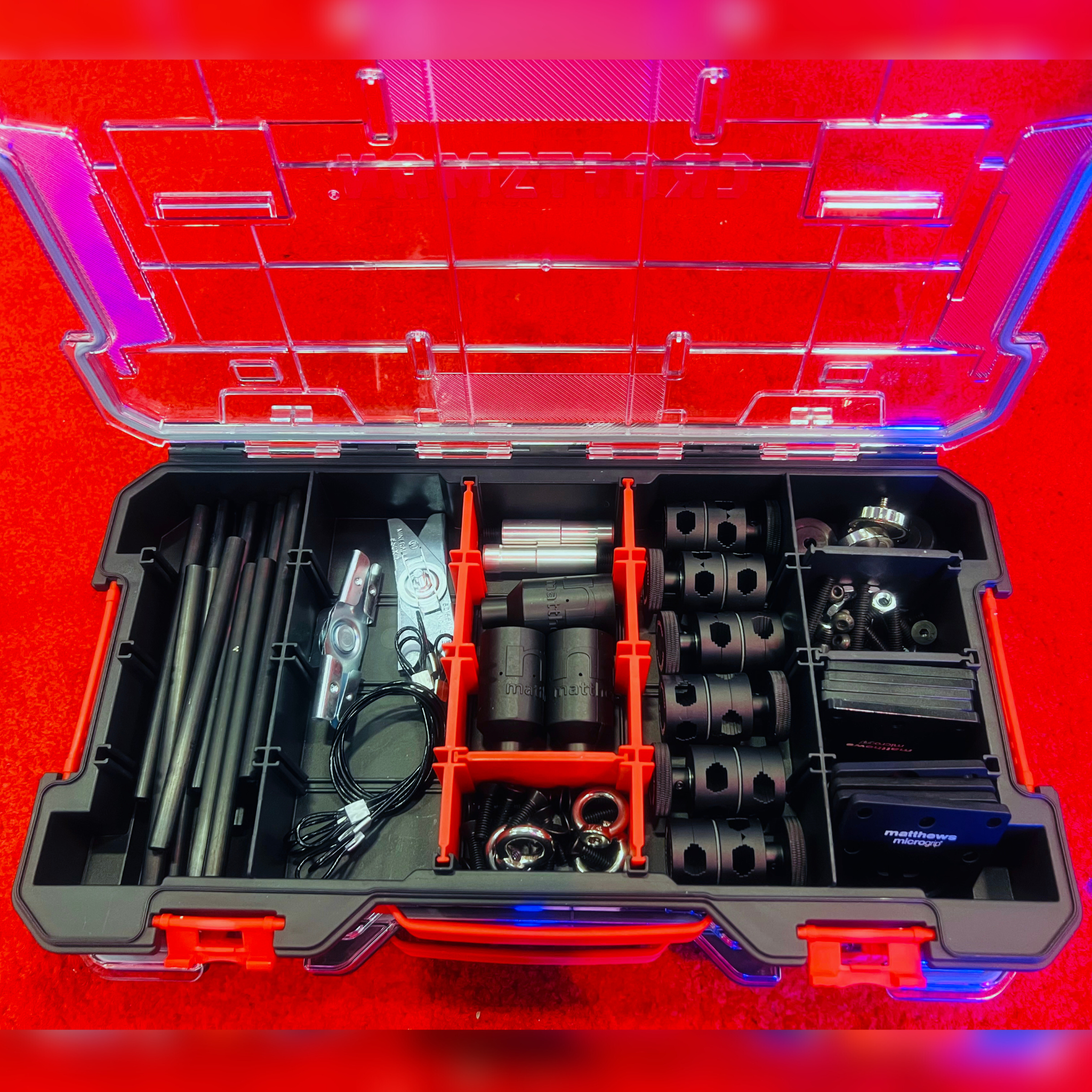Live Media Group Holdings Dedicates REMI Video Production Control Room at TNDV HQ
The production control room is based on the Ross Video Ultrix Acuity platform with Ross graphics

NASHVILLE, Tenn.— Live Media Group Holdings (LMGH) has built and integrated a new production control room at TNDV headquarters, one of its three divisions, leveraging REMI (remote integration model) production.
“With REMI, the value proposition is that there’s no need to setup or build a full production suite at a remote location or send out skilled technical crew members to work the event. This cost-efficient approach allows for substantial savings on airfare, hotel and other travel costs, as well as streamlining complex logistics,” said TNDV president Rob Devlin. “Now, high-resolution camera feeds travel to us over IP and/or satellite from the remote location and our rich local talent pool handles the work right here.”
During the pandemic, TNDV sister company GameTime Productions began packaging live remote event productions for major networks, such as ESPN. When GameTime landed its first REMI production contract, TNDV had only 15 weeks to build its centralized video production control facilities to capitalize on the opportunity, it said.
A swift decision was made to convert an often-idle greenscreen studio that had been used for occasional satellite media tours. In its place, it designed and integrated an impressive, fully equipped 28-by-17-foot production control room suite, LMGH said.
The production control room is based on the Ross Video Ultrix Acuity platform with Ross XPression for real-time graphics creation. It integrates the Ross Acuity software-defined production engine with 4 M/E switcher cards, Ultrix hybrid routing and multiviewer capabilities, it said.
The suite also provides adjacent, isolated areas for mixing digital audio and generating EVS-based sports replays and highlights, as well as comfortable seating for producers, technical directors, other team members and guests. If there’s a surge in demand for the REMI service, TNDV can harness a second control room that’s identically configured on its Elevation mobile unit, which is parked outside the building, it said.
TNDV’s facility already offered the critical REMI components, such as robust, reliable fiber-based high-speed internet and satellite uplink connectivity. TNDV added Haivision Makito X4 HEVC encoders enabling Secure Reliable Transport (SRT) of ultra-low latency 4K/UHD and HDTV High Dynamic Range (HDR) contribution video.
Get the TV Tech Newsletter
The professional video industry's #1 source for news, trends and product and tech information. Sign up below.
The Haivision Makito X4 platform ensures all incoming video signals for a particular event remain in sync for precision mixing and that the final program is dependably distributed to a customer’s destination. “Having these multiple tiers of transmission and networking is highly advantageous to REMI production and really sets this service apart,” said Devlin.
While the primary target is live sports, Devlin expects some projects will also come from music festivals and other live entertainment events—a core component of the TNDV live production business. The REMI control room first became operational in June 2024, with a series of women’s softball games produced for Athletes Unlimited. This new network of professional sports leagues specializes in delivering women’s pro basketball, softball, volleyball and lacrosse games for broadcast on networks, such as ESPN and Bally’s.
“With our new REMI service, we can now work with our media and entertainment customers any way they prefer,” said Devlin. “On-site production will never completely disappear, but in an era where many networks are hungry for content, using a REMI workflow helps with efficiency in delivering high-quality productions at lower cost. REMI saves content creators and broadcasters their two most valuable production commodities, time and money.”
More information is available on the TNDV and LMGH websites.
Phil Kurz is a contributing editor to TV Tech. He has written about TV and video technology for more than 30 years and served as editor of three leading industry magazines. He earned a Bachelor of Journalism and a Master’s Degree in Journalism from the University of Missouri-Columbia School of Journalism.

